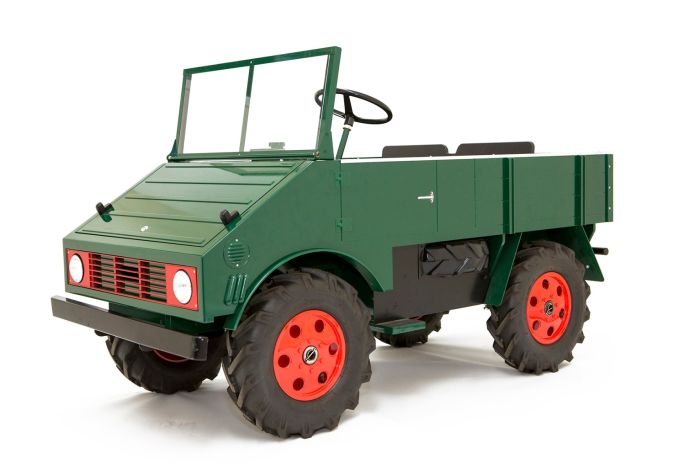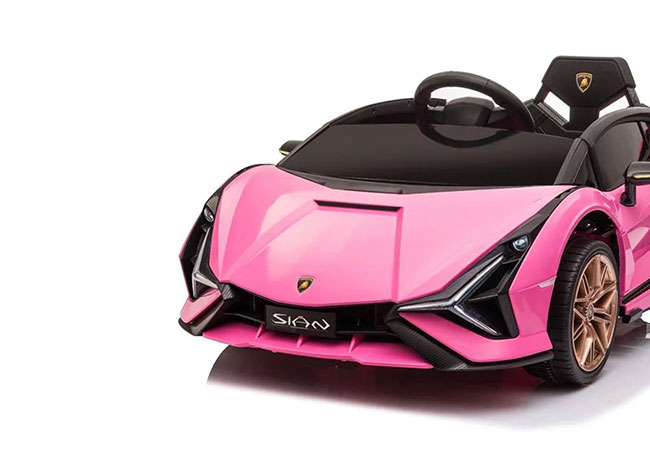Understanding the battery's lifespan and charging time of an electric ride-on children car is vital to the safety of your children and optimum performance. What you should know the battery type
The majority of electric vehicles designed for kids use rechargeable batteries, usually lithium-ion or lead acid batteries. Lithium-ion batteries have a greater battery lifespan than lead-acid batteries and charge more quickly.
Battery Capacity
The time of operation for a ride-on car is dependent on the battery's capacity. It is measured in amp-hours, or Watt-hours. The capacity of the battery is crucial since it determines the length of time the car's ride-on capabilities last prior to recharging.
Run Time -
The run time is the longest duration of continuous operation an electric car can run on one charge. It is contingent on a variety of factors such as the battery's capacity and motor speed, as well as the conditions and weight of the rider.
For electric cars typically, the run time is 30 minutes up to 2 hours with a single battery charge. However, some batteries that have large capacity could have longer time-to-run.
Charge time -
The charging duration refers to how long it takes to completely recharge the battery once it has run out of fuel. The charging time can differ based on the battery capacity, charger specifications and the charging technique.
Charge times range between 8 and 12-hours for a complete charge for electric rides-on automobiles. Certain models can charge faster speeds, especially using lithium ion batteries.
The battery's longevity and safety can be assured by adhering to the manufacturer's charging recommendations. The performance of the battery and its life span could be affected negatively by either overcharging it or undercharging it.
Method of Charging
Electric ride-on cars typically have a charging station which plugs into a outlet for homes. Some models include fast-charging capability or a smart charging system that monitors battery charge state and adjusts rate of charging accordingly.
Make sure that the charging connectors and port can be used with the charger that comes by the ride-on vehicle in order to protect the battery or electrical system.
Batteries for Other Use
Some electric cars permit the purchase of extra or spare batteries. This can extend the duration of play. The availability of extra batteries lets you swap out depleted batteries for fully charged ones, which reduces the amount of time between sessions.
When you know the charging time and battery life of your electric vehicle for children and your child will be able to enjoy endless hours of play and adventure. Battery life can be increased by charging the battery regularly and using the correct charging methods. Have a look at the top kids ride on cars for website info including race car toy car, race car toy, toy car, kids electric cars, childrens ride on, toy car, electric ride on cars, kiddies cars, remote control childrens electric cars, kiddies cars and more. .

How Do You Maintain And Put Together A Child's Ride-On Vehicle?
The assembly and maintenance of ride-on toys for children is essential to maintain their safety, quality and long-term durability. Here are some common maintenance and assembly requirements for ride-ons for kids:
The majority of ride-on cars are assembled in part when they arrive and require some sort of assembly. Attaching the wheel, steering wheel, seats and other accessories to the ride-on vehicle in accordance with the specifications from the manufacturer is the most common method.
Be sure to follow the assembly directions carefully, making sure that the components are properly attached and aligned properly. As directed finish the assembly with the equipment and tools provided.
Cleaning -
Regular cleaning is essential to keep the ride-on car looking its best and functioning properly. Make use of a soft, dampened sponge or cloth with mild soap and warm water to wash exterior surfaces.
Be mindful of areas that are susceptible to buildup including the wheels, tires, and undercarriage. Utilize a toothbrush or brush to clean hard-to-reach areas and remove stubborn grime.
Do not use harsh cleaners or water jets that are high-pressure, which can damage the electronic and paint components on the car.
Battery Care -
The maintenance of the battery is essential when the ride-on is powered by rechargeable batteries. Proper battery care will maintain performance, and prolong battery lifespan. Follow these guidelines to take care of your battery -
Charge the battery fully before first use and following each use to ensure the longest runtime possible.
Avoid overcharging or leaving the battery hooked to the charger for prolonged durations, since this could cause damage to the battery and decrease its life span.
The battery for the ride-on car should be stored in a cool, dry area when not being used, away from direct sun or extreme temperatures.
If you have to you need to clean the terminals, use the help of a terminal cleaner or wire brush if they are corroded.
Replace the battery if it doesn't hold any charge or displays signs that it has been damaged or degraded.
Tire Maintenance -
Examine the tires frequently for signs of wear, damage, or loss of pressure. Inflate the tires according to the recommended pressure by using a bicycle pump or air compressor as needed.
Check the tread pattern to look for any debris or other foreign objects that may cause flats or punctures. Repair or replace damaged tires by removing any obstructions.
Lubricate the axles, wheel bearings, and other parts to ensure a smooth rotation.
Occasional Repairs and Replacements
Even with regular maintenance, it is possible that ride-on vehicles will require repair or parts replaced because of wear and tear or accidents.
Be aware of indicators of malfunction and degradation like unusual noises, loss or power, or erratic behaviors. Consult the manufacturer’s instructions or contact Customer Support for help troubleshooting.
Replace damaged or worn-out components as soon as possible to prevent any further damage, and to ensure the safety and function of the ride-on vehicle.
Follow these steps to maintain your child's ride-on car and ensure hours of fun and safe play for them. View the most popular go here about ride on toys for website tips including electric ride on, toy toy cars, toy the car, ride on digger, electric toy car, toy cars toy car, toy cars toy car, kidscars, car electric ride on, pedal car and more. .

What Factors Should I Consider Before Buying An Electric Vehicle For My Kids? What Are The Advantages?
Before you purchase an electronic kids car There are many things to think about to make sure you pick the correct car for your child's needs and preferences. Here are some important considerations and information about the cost as well as size as well as pros and cons.
When choosing an electric car to your child, consider the size and age of your child. Children who are smaller or younger may choose compact, lightweight vehicles. While older children and people with larger bodies may require larger cars that are able to be able to accommodate them in a comfortable manner.
The weight and size of the Car -
Electric cars for kids come in various sizes. They range from small replicas to large-scale replicas. The size and weight of the car your child is driving must be determined by their age, size and capacity. Also consider how much space is available for play and storage.
Price Variation
The price of electric cars for children can be a bit different dependent on a variety of factors, including size, brand and quality. The prices of small-sized models typically range between $50 and 200 dollars, whereas the costs for larger scale models can vary from $200 to $800.
Pros and Pros and
Pros -
Electronic Kids' Cars - These vehicles are perfect to play with and are great for imaginative games. Children can enjoy the thrill of having their own vehicle.
Motor Skill Development. Driving an electric car can help children improve their spatial awareness, coordination, and fine motor skill.
Outdoor Play – Electric cars encourage outdoor activity and play. This promotes exercise and exploration.
Realistic Features- A lot of electric children's vehicles have realistic features, including working headlights as well as horn sounds. They also have support for MP3 players, which improves the overall experience.
Cons
Costs - Electric children's automobiles, especially licensed replicas of the most well-known brands, can be costly.
Battery life - Electric vehicles rely on rechargeable battery power that can only last a brief duration or require frequent recharge.
Safety Concerns: Electric cars pose a number of safety risks like accidents and falls or entrapment if they are not operated by an adult and in a responsible manner.
Maintenance and Assembly Some electric vehicles require assembly on arrival, in addition to regular maintenance such cleaning, battery care, and, occasionally, repairs or replacements of components.
Features and Accessories
Take a look at the options and features that are offered for the electric vehicle for children. For example, working headlights or horn sounds. Select a model that has features and accessories that are compatible with the preferences of your child.
The final verdict on the top electric vehicles for children will be determined by factors such as the age of your child (or size), interests, and financial budget. Make sure you compare different models, review them and weigh the pros and cons before making a decision. Take a look at the top Audi kids car kidscars.co.uk info for site recommendations including race car toy, toy ride, riding digger, toy and car, toy a car, childs ride on car, car for toy, kidscars, ride on car, kiddies cars and more. .
